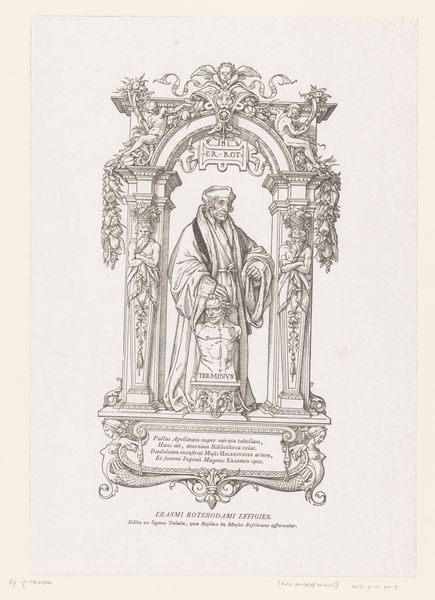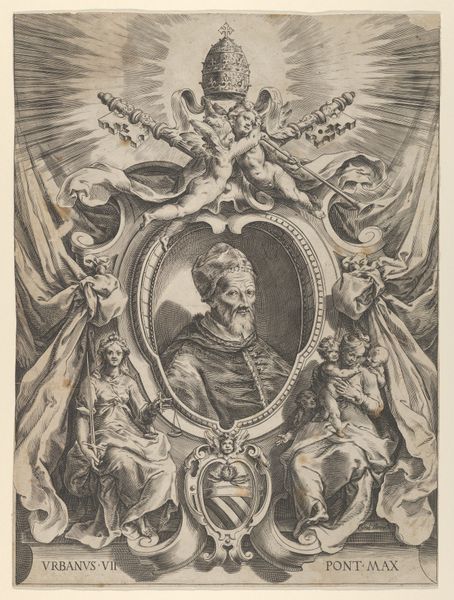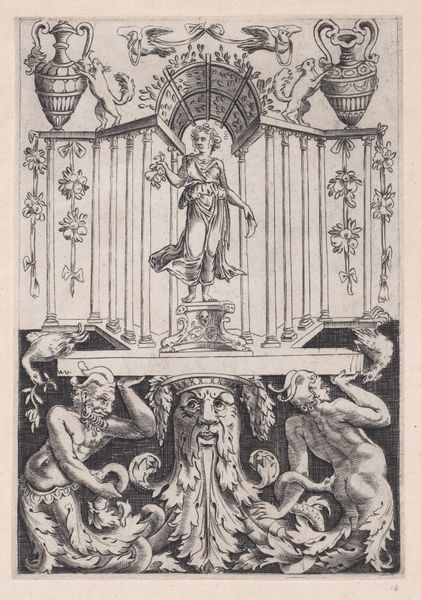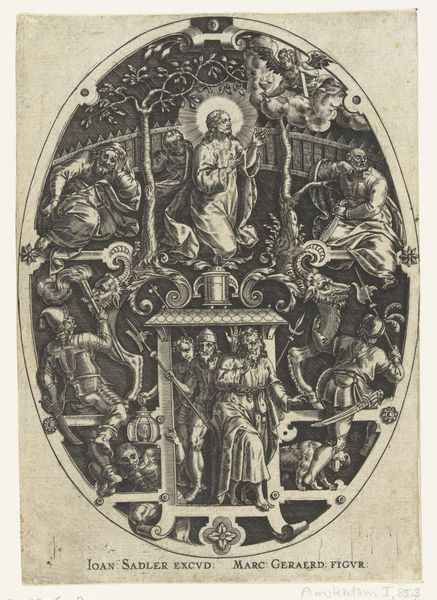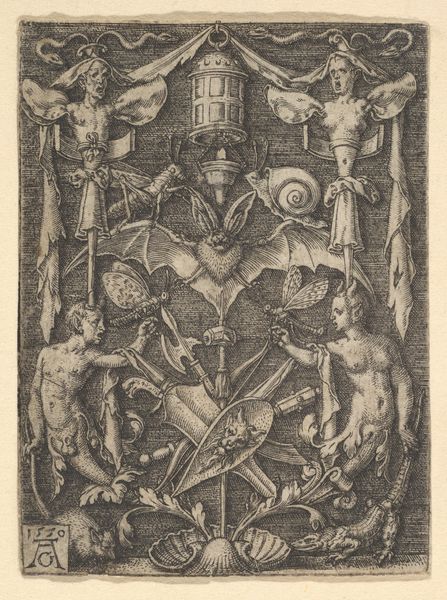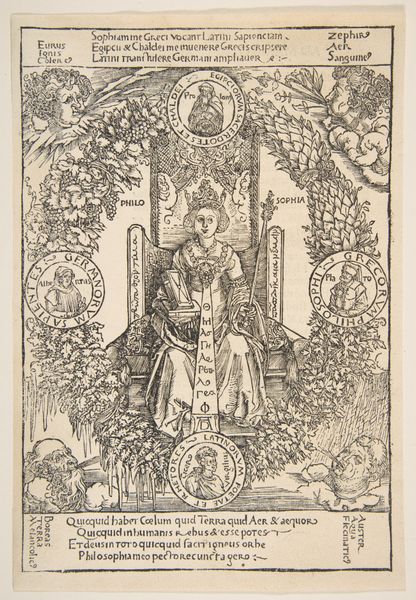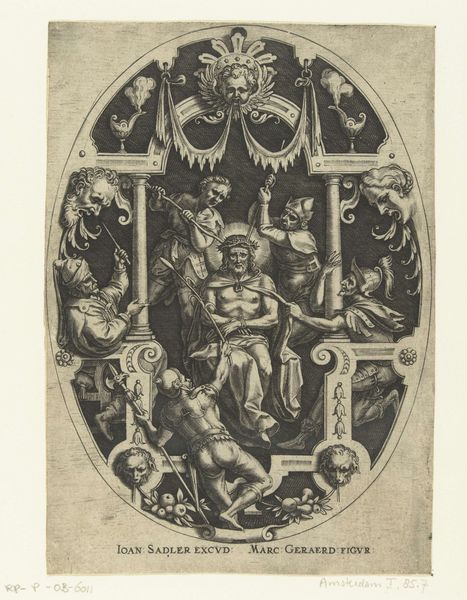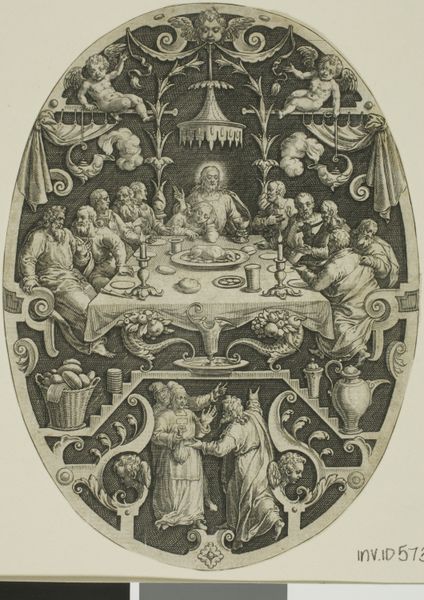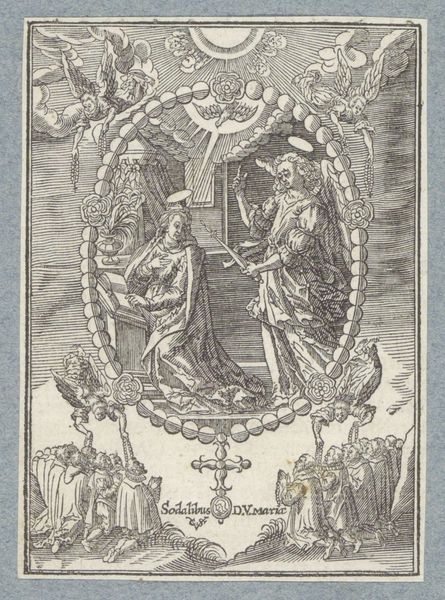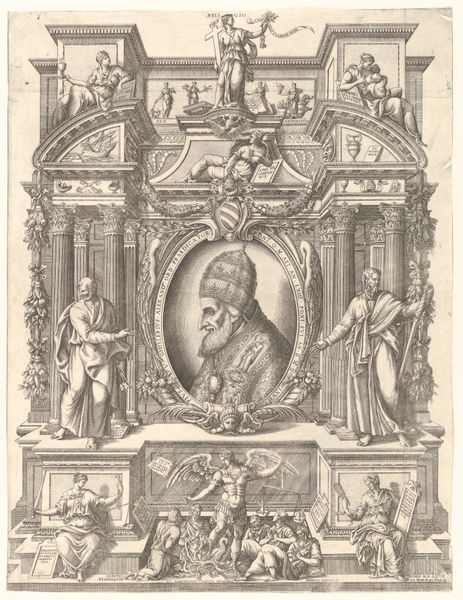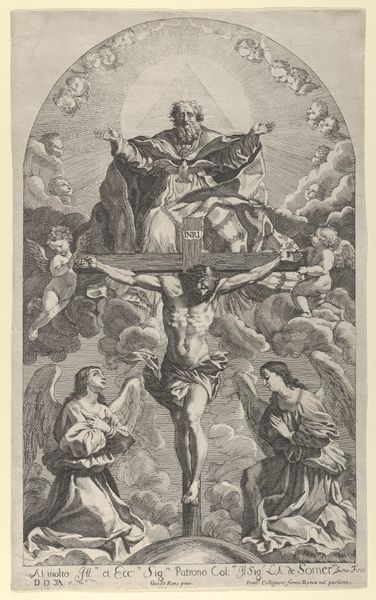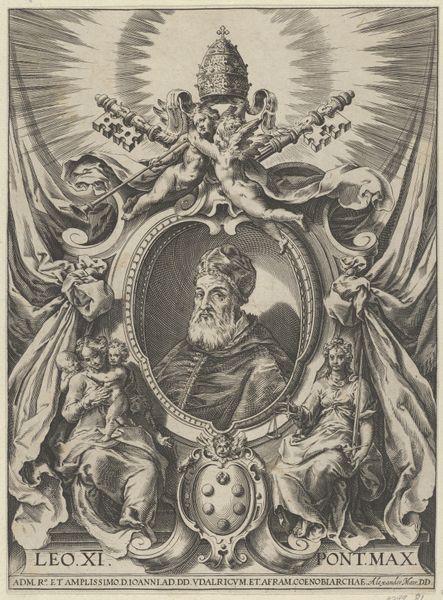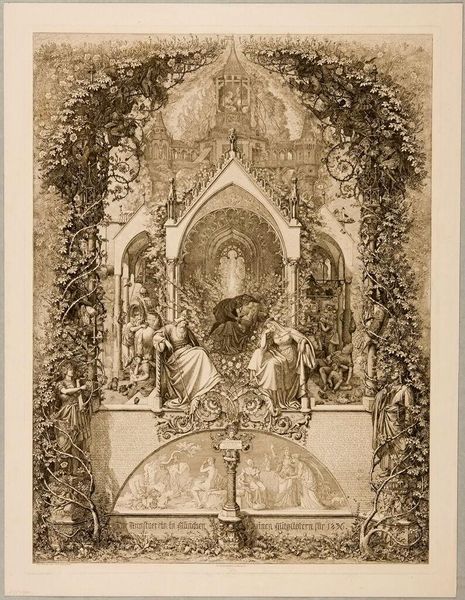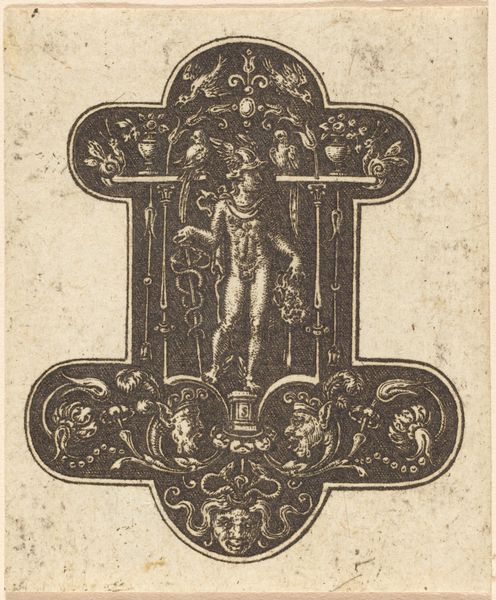
print, engraving
#
portrait
#
baroque
# print
#
old engraving style
#
history-painting
#
engraving
Dimensions: height 166 mm, width 124 mm
Copyright: Rijks Museum: Open Domain
Editor: Here we have Claude Mellan's 1629 engraving, "Portretbuste als reliekhouder van H. Eligius," currently held at the Rijksmuseum. It has such a formal, almost austere mood, but the framing elements add this theatrical flair. What do you see in this piece that connects with its historical context? Curator: The engraving’s subject matter and style directly relate to the period's socio-political and religious climate. Notice how Saint Eligius, the patron saint of goldsmiths, is framed. It's more than mere decoration; the framing is part of constructing a specific image and promoting the power of the Catholic Church, and specifically its control of relic production during the Counter-Reformation. Consider the cherubs, the scales of justice – are they purely decorative, or do they reinforce the values the Church was trying to project? Editor: I guess I was seeing the scales as simply symbolic of the balance associated with justice. But you're suggesting it's tied to something larger? Curator: Exactly. Engravings like these weren’t just portraits; they served a public role. They disseminated idealized images of saints, reinforcing religious doctrine. The choice of Eligius is itself significant; he represents a connection between faith and skilled labor, reinforcing the importance of religious patronage in economic life. Do you think it's intended for the masses, or a more specific audience? Editor: Probably a specific audience... the goldsmiths themselves, maybe? To encourage their devotion and contribution? It's a reminder of their connection to the church. Curator: Precisely. By understanding the intended audience, we can appreciate how art like this served as a powerful tool in shaping societal values and maintaining institutional authority. It highlights the intersection of art, faith, and the socio-political landscape of 17th-century Rome. Editor: I never considered engravings as instruments of cultural and religious messaging quite so directly! Thanks!
Comments
No comments
Be the first to comment and join the conversation on the ultimate creative platform.
